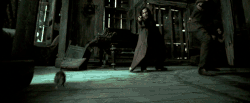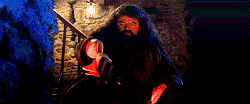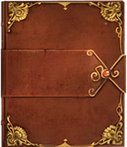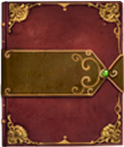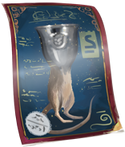
|
Warning!
At least some content in this article is derived from information featured in: Harry Potter: Magic Awakened & Harry Potter: Wizards Unite & Harry Potter: Hogwarts Mystery. |
- "I do hope they start right away, there's so much to learn, I'm particularly interested in Transfiguration, you know, turning something into something else, of course, it's supposed to be very difficult —"
- — Description of Transfiguration[src]
Transfiguration is a branch of magic that focuses on the alteration of the form or appearance of an object, via the alteration of the object's molecular structure.[1] Transfiguration can be done to most (if not all) objects and, as with most forms of magic, it includes — but is hardly limited to — Transfiguration spells.
Transfiguration is regarded as "very hard work" and "more scientific" than any other form of magic, i.e. the practising witch or wizard has to get it exactly right for the transfiguration to be successful.[2]
Nature
- "Transfiguration you have to get it exactly right, Transfiguration is more scientific."
- — J. K. Rowling[src]
Transfiguration is a very systematic, exact magical discipline, working best for the scientifically-inclined mind and as such it is deemed "very hard work" (especially compared to Charms, which affords a much larger margin for personal creativity).[3] Also "when transfiguring, it is important to make firm and decisive wand movements. Do not wiggle or twirl your wand unnecessarily, or the Transfiguration will certainly be unsuccessful" as stated by Emeric Switch in A Beginner's Guide to Transfiguration.
There are a number of factors a wizard must take into account when carrying out Transfiguration spells. The intended transformation (t) is directly influenced by body weight (a), viciousness (v), wand power (w), concentration (c) and a fifth unknown variable (Z)[4], as described by the following mathematical formula (as taught to first-years at Hogwarts School of Witchcraft and Wizardry).
Limitations
Whilst Transfiguration is an exceedingly useful branch of magic, it naturally has its own set of limitations.
Usually, a wizard or witch attempting to perform a Transfiguration spell would often find it easier to transfigure one thing into something else provided that the state it was originally in had something in common to what it would be coverted into (i.e. a statue of a dragon turning into an actual dragon, albeit the same size as it was when it was a statue). The overall mass and size of the object or entity to be transfigured into something else must also be considered, since it was stated by Hermione Granger that it was extremely difficult to transfigure something as large as a dragon, even by a skilled transfiguration expert like McGonagall. Furthermore, Transformation is limited by the fact that the dead cannot be revived via magic and hence one cannot "transfigure" the dead back to life, no matter how recently the death occurred.
Conjuration is principally limited by the Five Principal Exceptions to Gamp's Law of Elemental Transfiguration. The first (and only known) of these is the restriction that one cannot conjure food (though, pre-existing food can be charmed in certain ways — such as by summoning & multiplication — and transfigured by the other branches). Similarly, Wizarding law sets legal limitations on what one is and isn't allowed to conjure[5]. Finally, even if it is both possible and legal to conjure something it will ultimately never last.[5]
Strangely, whilst there are a variety of limits placed on Conjuration, the branch referred to as Vanishment seems to be completely unrestricted (this also appears true of Untransfiguration).
The branch of Transfiguration known as transformation magic has the largest number of restrictions placed upon it (both natural and legal). Firstly, even before one becomes an Animagus (both a Trans-species transformation and Human transfiguration) one is monitored closely as attempting to become such a thing is highly dangerous and even if one succeeds one must then register oneself at the Ministry of Magic (or face trial), due to the many potential uses of this kind of transfiguration in criminal activity. An Animagus is also limited by the fact that they can only transfigure into one kind of animal this way.
Conversely, general Human Transfiguration is more varied in that it allows one to transform another into a plethora of different animals but, on the other hand, the object of transfiguration will then possess the intelligence of the creature they become (unlike Animagi, who retain all their mental faculties in animal form). If this is an animal of lower intelligence (which is more likely than not) then one will, by extension, be entirely dependent on the caster to untransfigure them, which could potentially cause someone to be stuck in that form forever (which is why it is not recommended to cast this type of transfiguration on oneself).
Dangers
- "Transfiguration is some of the most complex and dangerous magic you will learn at Hogwarts. Anyone messing around in my class will leave and not come back. You have been warned."
- — Minerva McGonagall lecturing first-years[src]
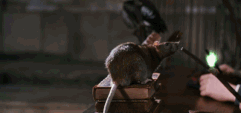
A poorly performed Transfiguration spell, in which the object is half-transformed
Due to the applied, precise nature of Transfiguration magic there is a large potential for it to go disastrously wrong, even for the experts. This is especially true if the practitioner isn't taking things seriously and/or punching above their weight (with respect to the magic they are attempting to perform).
If it is done improperly, the Transfigured object can become half-Transfigured or permanently stuck in one state (whether fully or partially Transfigured). For example, Viktor Krum once half-Transfigured himself into a shark in the Second Task of The Triwizard Tournament in 1994, although he wasn't stuck in that form, so it may have been intentional in his case.
Classification
Currently, Transfiguration is divided into four branches (though — whilst based on canonical information — the typology is conjectural). In these main four branches there are also sub-branches, such as human Transfiguration and Switching, which would be in the branch of Transformation. They are, in ascending order of difficulty: Transformation, Untransfiguration, Vanishment, and Conjuration. They are described below.
Transformation
- This refers to any Transfiguration that deforms or alters the target in some way.
It should be noted that whilst this branch of transfiguration is the first covered in the Hogwarts curriculum, containing simple transfigurations such as Match to needle. It also pertains to the most complex and dangerous forms of transfiguration too.
Transformation is divided into three sub-types, each with their own divisions and all of which overlap with one another to some degree:
Human Transfiguration

Animagus (left), Metamorphmagus (middle), Werewolf (right)
Human Transfiguration is a sub-branch of Transfiguration and a form of transformation in which one transfigures human body parts or an entire human being into another form. This branch is more difficult than any other and is only taught at N.E.W.T.-level. On of the spells learned in sixth year at Hogwarts is the transfiguration of the colour of one's eyebrows.
Many general human Transfiguration spells exist, this category houses the following type of Transformation magic as well: Animagus (a wizard that elects to turn into an animal), Metamorphmagus (the rare ability to change physical appearance at will), and werewolves (they however have no choice).
Untransfiguration
Untransfiguration is the art of reversing a previous transfiguration, being therefore considered both a transfiguration and a counter-spell. It is a mysterious branch of transfiguration. It is known that untransfiguration for failed transformations was taught early.
Reparifarge is a general spell used to counter the effects of a Transformation spell that was poorly performed and only partially transfigured the object in question. This spell is covered in A Beginner's Guide to Transfiguration.
Switching
Hermione Granger performing the Switching Spell
Switching is another sub-type of transformation magic. During switching, a physical feature from one of the two targets is switched with that of another, hence the name. It differs from a straight transformation in two ways: firstly, switching targets two objects simultaneously; secondly, the change in one of the pair is dependent on a change in the other.
It is difficult to gauge the relative difficulty of switches exactly compared to other types of transfiguration because the exact year in which they are learned isn't known. However, Professor McGonagall was impressed when Hermione knew about switches as a first year student, but was disappointed in Neville for not being able to perform even simple switches by fourth year. Therefore, students must start learning switches in second, third, or (early) fourth year (most likely third), earlier than almost all the other branches of transfiguration save transformation.
Trans-Species Transformation
- Trans-Species Transformation is a sub-branch of transformation magic in which one organism is transformed into something of a different species. This is a term which refers to transformation magic that (partially or completely) changes the target organism into a new species. It includes Cross-species Switches and hence has some overlap with switching magic. The only noted sub-branch to be more difficult is Human Transfiguration.
Vanishment

Severus Snape vanishes a snake
Vanishment is the art of causing things to Vanish; to "make things go into non-being". The difficulty of the Vanishment to be performed positively correlates with the complexity of the organism to be Vanished (for example, snails, as invertebrates, are easier to Vanish than mice, which are mammals).[6] Vanishment is moderately difficult — learned in fifth year — and is considered one of the hardest transfigurations to be tested on in one's O.W.L.
Strangely, only one incantation is needed to Vanish any object - Evanesco , Latin for "disappear" (with the intent of the caster alone directing it), unlike conjurations (which can require a variety of complicated incantations)
Conjuration

Hagrid conjures fire
Conjuration is the art of conjuring things ("bringing things into being") and hence is the opposite of Vanishment. It is harder than its counter-part, being a N.E.W.T.-level feat and is taught to sixth and seventh years at Hogwarts. It is also considered to be very advanced magic, though some conjurations are considered simpler then others.
One should note that there are numerous restrictions (both in Law and Nature) placed on the art of Conjuration, unlike Vanishment which appears to be unrestricted. For example, something that is conjured will not last (or, "remain in being") but it is unknown whether or not something that is vanished could forever remain in non-being if left to its own devices.
Known Transfigurations
Human transfiguration
- McGonagall's Animagus Transfiguration.
- Animagus transfigurations of the Marauders.
- Wormtail (Peter Pettigrew) transfigured into a rat.
- Padfoot (Sirius Black) transfigured into a black dog.
- Prongs (James Potter) transfigured into a stag.
- Rita Skeeter revealed as an unregistered Animagus.
- Hagrid tries to change Dudley into a pig, and fails.
- Testimonial of a man able to turn his wife into a yak after a Kwikspell course.
- After Mad-Eye Moody's death, Harry imagines that he was probably "transfigured [and] stuffed".
- Slughorn transfigured himself into an armchair.
- When he was alive, Nearly-Headless Nick accidentally transfigured Lady Grieve's broken tooth into a tusk.
- Gwenog Jones had a habit of turning people who disagreed with her into wood lice.
- Draco Malfoy was transfigured into a ferret by Barty Crouch Jr (under the disguise of Alastor Moody). He remained in this form for several minutes before being untransfigured by Minerva McGonagall.
- Krum's partial Transfiguration into a shark.
- Crouch having been Transfigured into a bone.
- Percy Weasley transfigured Pius Thicknesse into some form of a sea urchin during the Battle of Hogwarts.
Transformation
- Squibbert transformed a teapot into a ferret.
- Fat white rabbit changing into a top silk hat and back in the Magical Menagerie.
- Fred and George change Percy's badge to read 'Bighead Boy'.
- Cornelius Fudge transfigured a teacup into a gerbil, while trying to prove to the British Prime Minister that he was a wizard.
- Hermione trying to transfigure the mould off bread when on the run in Harry Potter and the Deathly Hallows.
- McGonagall Transfigured the chessmen guarding the Philosopher's Stone to giant size.
- Dumbledore may have transfigured the Slytherin banners in the Great Hall to become Gryffindor banners when he awarded Gryffindor last minute points.
- Cedric transfigured a rock into a Labrador retriever to distract the Swedish Short-Snout.
- Snape Transfigures McGonagall's fire into a black serpent.
- McGonagall turned Snape's black snake to smoke and then transformed the smoke to daggers.
Vanishment
- Harry accidentally vanished glass at a Muggle zoo.
- Minerva McGonagall introduced Vanishment to her class in her very first Transfiguration class with fifth year students
- Hermione Granger was the only student that could vanish objects by the end of the lesson
- Severus Snape used Vanishment in 1995 as a means to get rid of Harry Potter's Draught of Peace potion
- Harry Potter vanished the whole of his iguana during his O.W.L. exam
- Albus Dumbledore used Vanishment to counter Voldemort's fiery snake during their duel
- Harry used a form of Vanishment to rid himself of a snake that had crossed this path during his Hunt for Horcruxes
Other
- Healing requires at least an E on a student's Transfiguration O.W.L.
- Gargoyle statues outside Dumbledore's office 'coming to life' when password is spoken.
- Harry considered using Switching Spells to change a dragon's teeth into wine-gums.
- Harry wished to become an Animagus in order to breathe underwater as a goldfish or as a frog.
- Lupin studying for Transfiguration O.W.L.
Transfiguration spells
Unknown incantation
|
Known incantation
|
Accomplished Transfigurers
| Wizard(s) | Notes |
|---|---|
| Albus Dumbledore | Celebrated Headmaster of Hogwarts. Former Head of the school¨s Transfiguration department. |
| Minerva McGonagall | Celebrated Headmistress of Hogwarts. Former Head of the school¨s Transfiguration department.
She was also a registered Animagus. |
| Horace Slughorn | Successful at human transfiguration. Can take the form of an armchair. |
| James Potter | Successfully became an Animagus (unregistered). James became a stag, Sirius a large black dog, and Pettigrew a rat. |
| Peter Pettigrew | |
| Sirius Black | |
| Remus Lupin | As a victim of lycanthropy is successful at Trans-species Transfiguration. |
| Hermione Granger | A capable student who could perform Professor McGonagall's tasks successfully on the first or with few attempts. She later became the Minister for Magic. |
| Harry Potter | Took the subject at N.E.W.T. level. Later became an Auror and head of the Department of Magical Law Enforcement. |
| Ron Weasley | Also took the subject at N.E.W.T. level. Later became an Auror, until he retired to work in a joke shop. |
| Rita Skeeter | Successfully became an Animagus (unregistered). Took the form of a beetle. |
| Nymphadora Tonks | A natural Metamorphmagus |
| Teddy Lupin | |
| Lily Evans | Successfully transfigured a lily petal to become a fish when Slughorn found it. |
| Viktor Krum | Partially transfigured himself into a shark. |
| Lord Voldemort | Transfigured Dumbledore's rope of fire into a serpent and created a silver hand for Peter Pettigrew. |
| Bartemius Crouch, Jr | Transfigured Draco Malfoy into a ferret. |
| Gellert Grindelwald | Transfigured himself into Percival Graves for an extended period of time and Conjured a tongue for Abernathy. |
Transfiguration books
See also
Appearances
- Harry Potter and the Philosopher's Stone (First appearance)
- Harry Potter and the Philosopher's Stone (film)
- Harry Potter and the Philosopher's Stone (video game)
- Harry Potter and the Chamber of Secrets
- Harry Potter and the Chamber of Secrets (film)
- Harry Potter and the Chamber of Secrets (video game)
- Harry Potter and the Prisoner of Azkaban
- Harry Potter and the Prisoner of Azkaban (film)
- Harry Potter and the Prisoner of Azkaban (video game)
- Harry Potter and the Goblet of Fire
- Harry Potter and the Goblet of Fire (film)
- Harry Potter and the Goblet of Fire (video game)
- Harry Potter and the Order of the Phoenix
- Harry Potter and the Order of the Phoenix (film)
- Harry Potter and the Order of the Phoenix (video game)
- Harry Potter and the Half-Blood Prince
- Harry Potter and the Half-Blood Prince (film)
- Harry Potter and the Half-Blood Prince (video game)
- Harry Potter and the Deathly Hallows
- Harry Potter and the Deathly Hallows: Part 1
- Harry Potter and the Deathly Hallows: Part 2
- Harry Potter and the Cursed Child
- Harry Potter and the Cursed Child (play)
- Fantastic Beasts and Where to Find Them: The Original Screenplay
- Fantastic Beasts and Where to Find Them (film)
- Fantastic Beasts: The Crimes of Grindelwald - The Original Screenplay
- Fantastic Beasts: The Crimes of Grindelwald
- LEGO Harry Potter
- LEGO Harry Potter: Years 1-4
- LEGO Harry Potter: Years 5-7
- LEGO Dimensions
- LEGO Harry Potter
- Harry Potter: The Character Vault (Mentioned only)
- Wonderbook: Book of Spells
- Fantastic Beasts: Cases from the Wizarding World
- Harry Potter for Kinect
- Pottermore
- Wizarding World
- Harry Potter: Hogwarts Mystery
- Harry Potter: Wizards Unite
- Harry Potter: Magic Awakened
Notes and references
- ↑ JKR on the difference between Transfigurations & Charms, accessed 28/7/2011
- ↑ J.K. Rowling at the Royal Albert Hall, 26 June 2003
- ↑ J.K. Rowling on the nature of Transfiguration, accessed 28/7/2011
- ↑ Harry Potter and the Philosopher's Stone (film)
- ↑ 5.0 5.1 JK on the limitations of Conjuration, accessed 28/7/2011
- ↑ Harry Potter and the Order of the Phoenix, Chapter 15 (The Hogwarts High Inquisitor)


